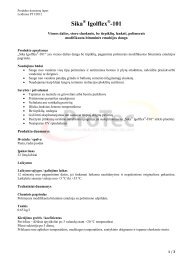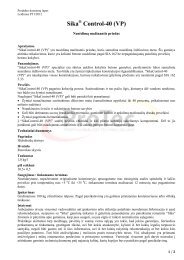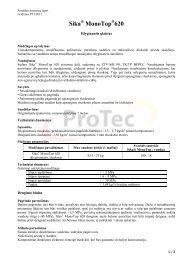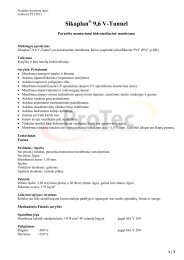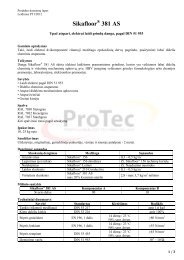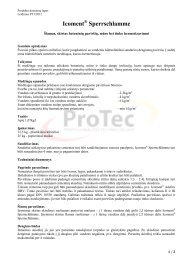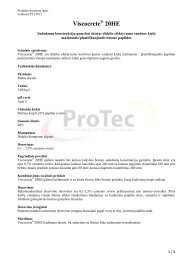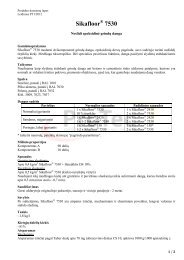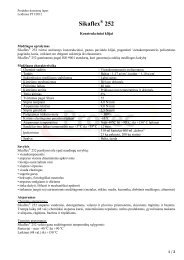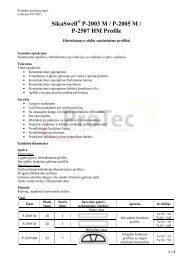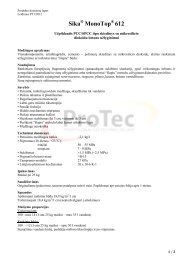Sikaflex Marine Handbook
Sikaflex® Marine Handbook - BlueMoment
Sikaflex® Marine Handbook - BlueMoment
- No tags were found...
Create successful ePaper yourself
Turn your PDF publications into a flip-book with our unique Google optimized e-Paper software.
Bonding and Sealing BasicsSika’s adhesives and sealants areworking materials which show goodaffinity for other surfaces. Their taskis to flow as a liquid onto and intothe contours of a surface and thentransform themselves into a solid,by developing both a physical and achemical bond with the substrate.Sika <strong>Marine</strong> Adhesive and SealantSystems can range from fluid liquidsto heavy thixotropic paste-likesystems, able to supply low-to-highstrengthvalues and cure to a highlyelastic or rigid bond. The ability ofthe adhesive or sealant to “wet” asurface is very critical in thedevelopment of a proper bond;solidification (curing) can take placethrough a physical or a chemicalreaction or through both at thesame time. Experience has shownthat chemically reactive adhesiveslike <strong>Sikaflex</strong> ® have the higheststrength, durability and resistanceto water.PreparationCorrect surface preparation is key tosuccessful bonding.Where there are weak orcontaminated surfaces, extensivepreparation maybe needed to ensurea perfect bond. Typical problems aredust, dirt, grease, oil, rust, flakingpaint, etc.The preparation selected will dependon the type of substrate (metal,plastic, paint, wood, etc.), theoperating conditions in service, thedegree of surface deterioration andthe practicalities of any particularinstallation. See the ‘notes onsubstrates’ in this manual or contactSika for details.Mechanical CleaningMechanical preparation, will berequired if, for example, corrosion isapparent, weak surface layersprevail, or surface degradation isshowing. The level of cleaning willbe determined by the type of surfaceand the degree of deterioration.Preparation techniques include theuse of abrasive nylon pads, abrasivepaper/fabric, wire brushing, abrasivewheels, and wet or dry grit blasting.Following mechanical treatment,additional cleaning with solventsmay also be required.Dedusting, DegreasingIf compressed air is used to removedust from surfaces, the air should befiltered to remove traces of oil.The use of vacuum cleaners is evenbetter for dust removal. Allnonporous surfaces must be cleanedprior to <strong>Sikaflex</strong> ® application.Only Sika-recommended cleaningmaterials should be used. Solvents,such as White Spirits and alcoholbased, are not recommended as theycan hinder cure or subsequentadhesion. Always use clean, lintfreewipes, and change them frequentlyto ensure that the contamination isremoved from and not redistributedonto the surface.Once clean, the substrates shouldbe left to completely dry beforeproceeding to the next operation.Note: Certain solvents, includingSika Cleaner ® -205, are notrecommended for use on absorbentsubstrates as unevaporated solventscan affect the curing mechanism of<strong>Sikaflex</strong> ® .PrimingPriming is a means of transforming asurface, either chemically, physicallyor both, into an ideal condition forsuccessful bonding, thus ensuringlong-term performance. The simplestform of priming is wiping theprepared surface with a conditioner(such as Sika Activator ® ) whichreacts with the surface providingimproved “wetting” characteristicsand more reactive sites.Porous and rough surfaces requirea primer with “film-forming”properties to re-profile the surface,producing a denser, more even bondline.Primers must always be allowed todry thoroughly before application ofthe <strong>Sikaflex</strong> ® adhesive. If left toolong, primed areas must be reappliedor reactivated. Minimum andmaximum drying times are given inthe primer chart in this guide.Primed surfaces should be protectedfrom contamination by dust, dirt,grease, vapours, moisture, etc., untilthe bond is formed.3



